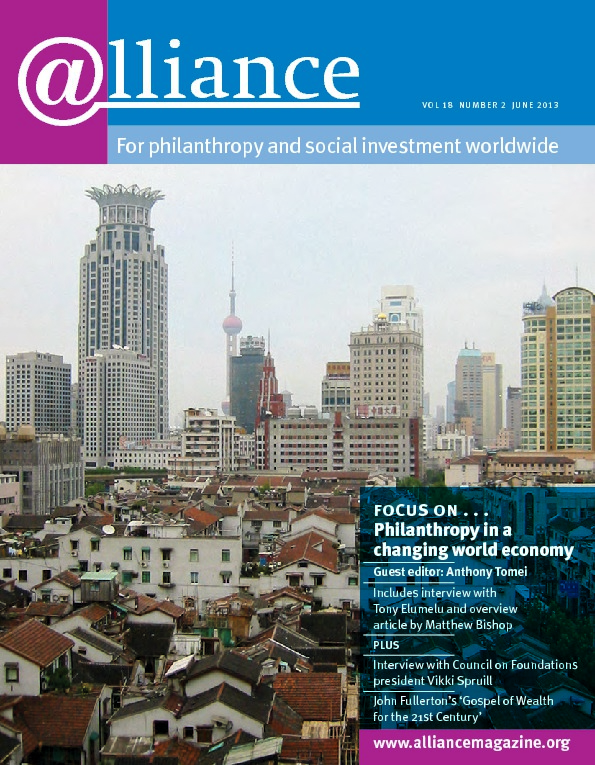The many similarities between Brazilian and Indian philanthropy underline that wherever there is accelerated economic growth, there is also a wealth of new philanthropic initiatives. But one cannot view them through the lens of other, more established philanthropic cultures. Concepts such as giving or grantmaking are peripheral to the philanthropy led by the elite of these newly rich countries.
There is little information on philanthropy in either Brazil or India, though, as CAF’s Global Giving Index shows, neither is particularly generous: Brazil is in 83rd position and India 133rd. But among the big, multimillion philanthropic initiatives things really look alike – with few exceptions.
The resources that fund this kind of philanthropy are generated by corporations, some with headquarters in developed countries, some family run, the great majority in their first or second generation. With family foundations, the first generation usually has a less sophisticated, charity-like approach to philanthropy. As wealth ages in the family, philanthropy tends to become more strategic.
However, when philanthropy is funded by corporate money but headed by families, as happens in emerging economies, there is often conflict between the business professionals and the family members. Philanthropy is therefore subject to a variety of influences that make it look somewhat schizophrenic. There are lots of different projects, some clearly inspired by social responsibility (eg not having children in your supply chain), others seeking to improve the company’s reputation (eg investments in cultural events or education) and some clearly linked to family interests (eg promoting wealth generation in the family’s native territory).
As the businesses professionalize, especially when they are publicly listed and thus become subject to stricter oversight, corporate and family philanthropy start to diverge. This is happening very fast in Brazil nowadays, where a family philanthropy boom is following the corporate philanthropy boom that took place some 10 to 15 years ago. The same trend can be seen in India.
In general, one can say that corporate philanthropy has essentially to do with reputation, or what might be called acquiring a licence to operate within a society. This is especially so in the extractive industries such as mining, which have great impact in the communities where they operate. But other industries with extended social outreach, such as financial institutions and telecommunication businesses, also have challenges in building their brand and legitimacy within each culture and country, and philanthropy has been an essential tool for this. So both in Brazil and in India you see a wide, sometimes overlapping assortment of relatively young philanthropic initiatives that are becoming more elaborate and seeking measurable impact in short periods of time.
Family philanthropy is about legacy: giving back to society the privileges one has had. Family foundations, which in the US are also called independent foundations, have more freedom to use their resources to support controversial issues.
Distrust of civil society organizations is also common to both countries. Corporations and families prefer to operate their own programmes rather than give their money to others. Nowadays, when CSOs receive funds, they are more often agents for the delivery of a programme than recipients in their own right.
Controversial issues such as human rights or government transparency receive almost no investment, since companies tend to favour image-building causes such as education, children’s rights and community development. In both countries, CSOs bemoan the loss of international aid, due to a perception that they have the resources to solve their own problems, which is leading to a crisis in funding for more difficult issues.
It would be easy to make too much of these similarities. Here are two things to bear in mind. First, the formation of a global supranational elite tends to homogenize the way philanthropy looks everywhere, not only in emerging-market countries. Developments like the Giving Pledge, social businesses or microfinance traverse the world rapidly, sometimes following the traditional North-South path but also moving from South to South and even South to North.
Second, there is one crucial difference between Brazil and India and this is in regard to philanthropic infrastructure. While Brazil has had for almost two decades a reasonably strong association of foundations, GIFE, there is no equivalent national association in India – though the Indian Philanthropy Forum, established a couple of years ago, is beginning to bring the donor community together.
Fernando Rossetti was secretary-general of GIFE from November 2004 to February 2013. Email rossetti@uol.com.br






Comments (0)